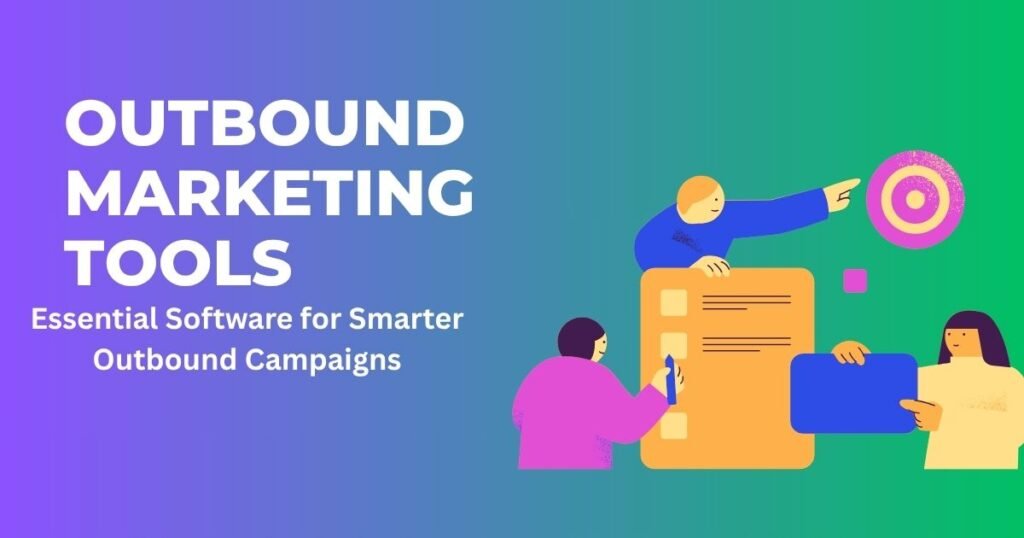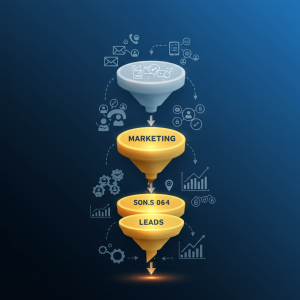Best Outbound Marketing Tools to Enhance Your Campaigns

Outbound advertising is still an effective way to get in front of potential customers, and to grow your business. But what really separates the good from the great when it comes to an outbound strategy? The tools you use.
This blog will tell you everything that you ever need to understand about the best outbound marketing tools — what they are, what functionalities you need to check, features you will see, and also a summary of a few top tools today. You’ll have the tools to elevate your strategy by the end of this post.
Welcome to The World of Outbound Marketing
Push Marketing: Outbound Marketing
Outbound marketing, or what is commonly referred to as “push marketing,” is the process in which business executives, in an attempt to attract their customer, initiate the first contact. Cold emails and calls, direct mail and online ads are all components of outbound marketing, which is devoted to piquing people’s interest and interacting with leads.
Despite the growing popularity of attracting people through delivering value, or inbound marketing, outbound marketing can still deliver excellent results if it’s done properly. It becomes particularly effective when combined with sophisticated tools that make processes more efficient, outreach more targeted, and impact more pronounced.
Outbound Marketing Tools — What is Outbound Marking?
Outbound machine guns (tools)
Outbound machine guns – are the software or platforms for automation, management and improvement of your outbound process. These are the systems that allow businesses to find new leads using a number of outbound methods like cold email, social media, or even direct mail.
The right tools can help prevent a scattershot approach, versus a straightforward, disciplined and scalable strategy. Businesses will have the ability to centrally manage campaigns, monitor outcomes and shift tactics for improved ROI.
Essential Elements for the Best Outbound Marketing Software
When deciding which outbound marketing tools to use, keep in mind features that facilitate what you are trying to achieve and generally make your life easier. Here’s what to look for:
Automation Capabilities
Offers the capability to automate recurring tasks such as sending out emails or scheduling follow-ups. Automation helps to save time and make sure that your campaign is consistent.
Personalization Options
Modern customers are looking for customized touchpoints. Find an app that allows you to add dynamic fields like names or company information to communicate.
Analytics and Reporting
Understanding how your campaigns are performing is a vital part of being able to improve them. The top tools offer advanced analytics to help you monitor open rates, click-through rates and conversions.
Integration with CRM
With built-in CRM you can manage your client data more effectively and see the insights in one place.
Multi-channel Functionality
Outbound campaigns that work are those that leverage across multiple channels, and that’s where you gain the big with tools that enable email, SMS/Texting, Calling, and social media outreach.
Top 5 Outbound Tools
Below are five outbound marketing tools that have been creating trends in the industry. Each one is crafted to help you uplevel your outreach.
1. HubSpot Sales Hub
What it does
With Sales Hub, HubSpot has created an end-to-end sales automation suite that combines email automation with lead tracking, and CRM integration.
Why it’s great
-
User-friendly interface
-
Comprehensive analytics
-
CRM integration with HubSpot marketing tools
Ideal for
Sales organizations that need a consolidated dashboard where they can manage their campaigns effectively.
2. Salesloft
What it does
Salesloft focuses on sales engagement, and offers email, call or personalized outreach tools.
Why it’s great
-
AI-powered recommendations
-
Detailed reporting
-
Intuitive dashboards
Ideal for
Companies looking to increase the quality and effectiveness of their sales follow-up.
3. Outreach
What it does
With Outreach, you’re able to orchestrate multi-channel campaigns with automated and personalized touches at each step.
Why it’s great
-
Advanced scheduling features
-
Comprehensive A/B testing
-
Seamless CRM integrations
Ideal for
Sales teams who are looking to have high quality, personalized conversations.
4. Mailshake
What it does
Mailshake is more like an email outreach (lead generation) platform.
Why it’s great
-
Easy-to-use templates
-
Email personalization
-
Focused on lead generation
Ideal for
SMBs: Small- and medium-sized businesses getting started with cold emailing.
5. LinkedIn Sales Navigator
What it does
This software makes use of LinkedIn’s ecosystem to facilitate your connections networking with top-level decision-makers.
Why it’s great
-
Advanced filters and lead search
-
Direct integrations with CRM
-
PIPEDA-compliant, ongoing updates on all lead activity
Ideal for
B2B salespeople and teams who want warm leads from a professional network.
Examples: Outbound Campaign Success Stories
Case Study 1. Mailshake and an Email ROI Boost
A SaaS provider was in trouble with generating leads and needed some help to re-jig their cold email approach, so they tried Mailshake. Leveraging both dynamic fields and A/B testing, the company drove 45 percent more open rates and an incredible 25 percent more conversions.
Case Study 2. Salesloft and a Startup’s Scale-up Success
A startup using Salesloft’s new AI-powered deal intelligence tripled the productivity of its sales team. They even cut customer acquisition costs by 20 percent thanks to improved outreach sequencing.
These are just some of the examples which illustrate the impact a good choice of outbound marketing tools can have on your business, no matter what its size or area of business.
Strategize Your Outbound Efforts for Optimal Results
With outbound marketing devices you will be able to scale outreach and get more return for your effort. From sending cold emails, booking sales calls, to composing LinkedIn messages, these tools automate the whole process and you get better results with only a fraction of the effort.
Determine your current marketing needs, weigh the features of various tools against each other, and don’t be afraid to dig into case studies to see what has worked for companies similar to yours. Then when you are ready, begin to make the most of those resources to establish your competitive advantage.
Learn how CRM systems support long-term customer value in our guide on what customer relationship management in marketing really means.





